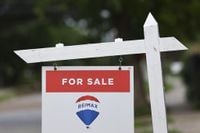New York City’s luxury real estate market wrapped up August 2025 with a flurry of high-end contracts, even as national housing data reveals a broader slowdown in buyer enthusiasm and a shift in market power. While Manhattan’s elite continue to ink multimillion-dollar deals, agents across the United States are reporting a stark decline in urgency among homebuyers, with affordability concerns and high mortgage rates looming large over the sector.
According to a roundup from Olshan Realty published on September 1, 2025, wealthy buyers in Manhattan signed contracts for 16 homes priced at $4 million or more during the week ending Sunday, August 31. That figure, though six fewer than the previous week, sits comfortably in line with the 10-year average of 16.5 luxury deals for the week ahead of Labor Day. The total value of these contracts reached $111.5 million, based on the most recent listing prices.
The top contract last week was a $14.53 million unit in Chelsea’s newly built One High Line development. The condo boasts four bedrooms, four and a half bathrooms, and a sweeping great room with views of the Hudson River. For those keeping score, One High Line was originally known as XI before a staggering $1 billion foreclosure forced a rebranding. The particular unit in question was first listed off-plan at $14.245 million, and now, according to Olshan Realty, units in this development regularly land at or near the top of the weekly luxury report. Residents enjoy amenities such as a fitness center, a 75-foot pool, a golf simulator, and a children’s playroom—a suite of perks designed to match the steep price tag.
The second-priciest home to find a buyer last week was a condo at 220 Central Park South, a Robert A.M. Stern-designed building along Midtown’s storied Billionaires’ Row. This developer unit was asking $13.5 million and features two bedrooms, two and a half bathrooms, and a great room facing Central Park. The building, which holds the record for the most expensive home ever sold in New York City, offers amenities like private dining, a basketball court, and an 82-foot saline pool.
In total, August 2025 closed as the fourth-best August since Olshan Realty began tracking luxury contracts in 2006, with 92 contracts signed for homes priced at $4 million or more. That’s no small feat, especially considering the broader national trends.
Across the United States, the housing market tells a different story. A new survey conducted by ResiClub and Zoodealio between July 28 and August 24, 2025, found that 74 percent of real estate agents believe buyer urgency—the strength and immediacy of buyer demand—is now lower than it was a year ago. Of those, a striking 40 percent said urgency has fallen "significantly." The survey included 238 agents, half of whom have at least 15 years of experience in the field, and it revealed that every region is feeling the chill, from the Midwest (64 percent reporting lower urgency) to the West and Southeast, where 77 percent of agents observed a decline. Florida, long a hotbed of real estate activity, is included in the Southeast’s embattled sector.
General demand is also on the wane, with 69 percent of agents reporting a decrease compared to last year—27 percent described this as "significantly lower." As a result, 81 percent of agents nationwide now characterize their local housing market as one where "buyers are gaining power." Only five true "sellers’ markets" remain in the country, according to a recent report cited by Newsweek.
Home sales are falling through at record rates. Redfin, a prominent real estate brokerage, reported that 15.3 percent of home purchases were canceled in July 2025—the highest ever recorded for that month. In their recent report, Redfin wrote: "Home purchases are falling through more than usual because high prices, high mortgage rates and economic uncertainty are making buyers uneasy. Buyers also have more homes to choose from than in the past, which means they hold the negotiating power in many markets and often aren't in a rush."
Joel Berner, Senior Economist at Realtor.com, told Newsweek that the challenges stem from "mortgage rates and affordability." He explained, "We don't believe that there is anything fundamentally causing people not to want to buy a home, it's just that prices and mortgage rates have remained high and people are having their budgets squeezed. This has caused the slowdown and lack of urgency among buyers, resulting in the pileup of for-sale homes on the market and this slow summer selling season." Berner added that if mortgage rates come down, "there is quite a bit of latent demand that will show itself as the cost of a home purchase becomes more manageable."
The minutes from the Federal Reserve Open Market Committee’s July meeting underscored these trends: "Regarding the household sector, several participants observed that slower real income growth may be weighing on growth in consumer spending. A few participants noted a weakening in housing demand, with increased availability of homes for sale and falling house prices."
Chen Zhao, Redfin’s head of economic research, told NBC News that some sellers are responding to weak demand by pulling their homes off the market: "When prices weaken, sellers pull back. Based on what our agents are telling us, a lot of people are waiting for these rate cuts."
Lawrence Yun, chief economist at the National Association of Realtors, echoed these concerns at a recent conference: "For new homebuyers, their monthly payment obligation has increased, and this is what's killing the housing market. Mortgage rates are the magic bullet, and we're waiting and waiting until those come down." Many in the industry believe buyers are sitting on the sidelines, waiting for the Federal Reserve to cut interest rates at its next meeting, scheduled for September 16-17, which could finally bring some relief to mortgage rates and reignite demand.
Still, the current conditions are creating a paradox. While the slowdown in price growth and surging inventory could ease affordability concerns for buyers, it spells trouble for homeowners and lenders—especially if homebuilders start scaling back new projects in response to weaker demand. Mark Zandi, Chief Economist at Moody’s, sounded a warning last month: "Housing will thus soon be a full-blown headwind to broader economic growth, adding to the growing list of reasons to be worried about the economy's prospects later this year and early next."
For now, Manhattan’s luxury market seems to be swimming against the national tide, buoyed by high-profile developments and well-heeled buyers. But with the rest of the country bracing for a possible downturn, all eyes are on the Federal Reserve’s next move—and on whether a drop in rates can jolt the housing sector back to life.




